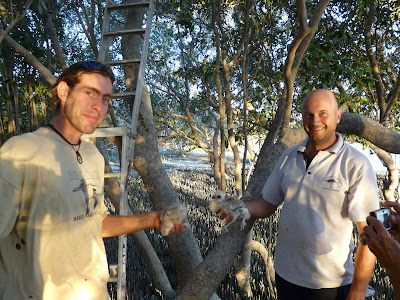Of course the ones paying attention will notice that the firts bird is in fact an Oriental plover, one of 213 which have been feeding on the over grazed area of the paddock behind the observatory...well they do like short grass to feed in !


Two shots of the Pacific golden plover above and below showing the long legs an dthe delicate shape of the bird.

and here is the long distance runner ! the Red capped plover chick orginally ringed about 4 km down the beach taken all the way up the beach by its parents who were still buzzing us several 100 meters away.

You all thought i was going to call this an adult Red capped plover didn't you??!! In fact its a Greater sand plover, one of several hundred running around on teh beach at high tide.




















































































